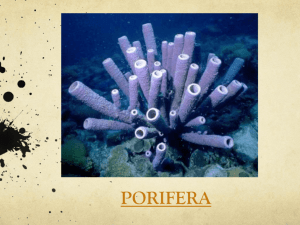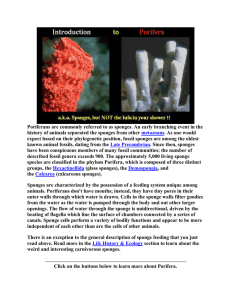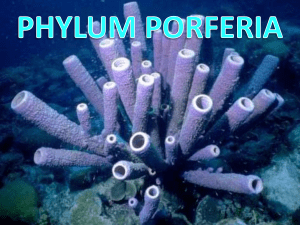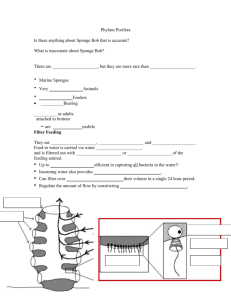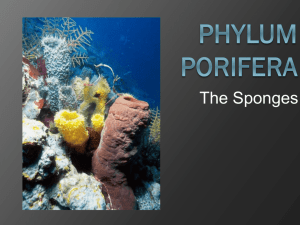Biology 11: Porifera (Sponges)
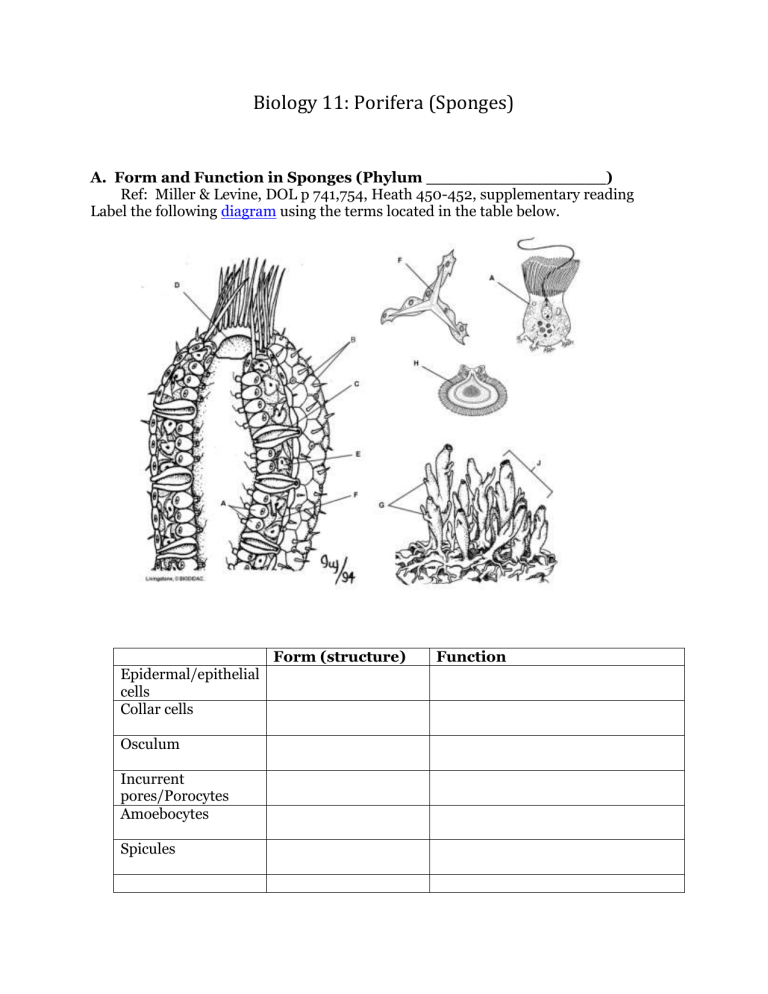
Biology 11: Porifera (Sponges)
A. Form and Function in Sponges (Phylum _________________)
Ref: Miller & Levine, DOL p 741,754, Heath 450-452, supplementary reading
Label the following diagram using the terms located in the table below.
Epidermal/epithelial cells
Collar cells
Form (structure) Function
Osculum
Incurrent pores/Porocytes
Amoebocytes
Spicules
Biology 11: Porifera (Sponges)
Adult sponge
Buds
Gemmules
1. Feeding and Digestion
•sponges are different from all other animals in that they lack a _____________
& _____________
•__________-feeders - sift microscopic pieces of food from __________ as it passes through
•___________ cells have membranous collar that traps food particles - food then ingested by ______________________
•digestion is termed __________________ because it takes place
_____________ cells
•collar cells may digest food or pass it on to _____________________
•amoebocytes creep through ___________________ - distribute digested food throughout body
2. Roles of Water Flow (describe) a) Respiratory - b) Excretory - c) Internal Transport - d) Sexual Reproduction -
Biology 11: Porifera (Sponges)
3. Reproduction
Sexual Reproduction
Label the following diagram with the following terms: sperm, egg, larva, flagella, new sponge. a) Eggs & sperm are produced by what cells of a sponge?
_________________________________________________________
________________________________________________________ b) Where in the sponge shown in the diagram does fertilization occur?
_________________________________________________________
________________________________________________________ c) What is a hermaphrodite? Are the sponges in the diagram hermaphrodites?
Explain your answer.
_________________________________________________________
_________________________________________________________
Biology 11: Porifera (Sponges) d) Describe the larva that is produced by sexual reproduction in sponges.
_________________________________________________________
________________________________________________________ e) Are the sponges in the diagram sessile? Why or Why not?
_________________________________________________________
_______________________________________________________ f) How do sperm enter a sponge?
_________________________________________________________
_______________________________________________________ g) How are sperm transported to eggs within a sponge?
_________________________________________________________
_________________________________________________________ h) Are the cells of the larva 2n cells or n cells? Explain your answer.
_________________________________________________________
_________________________________________________________
_________________________________________________________
_________________________________________________________
Asexual Reproduction
•sponges reproduce asexually by budding or by production of gemmules a) Budding (describe process) b) Gemmules (describe structure & function)
Biology 11: Porifera (Sponges)
B. Diversity in Sponges
1. Study “Porifera” chart on back wall & see Heath, p. 452. a) List at least four ways in which sponges differ from each other. b) What characteristics are used to classify sponges?
C. Roles of Sponges
1. Roles - List and describe
2. How are sponges proving useful to medical science?
3. In what ways do sponges differ from all other animals?

